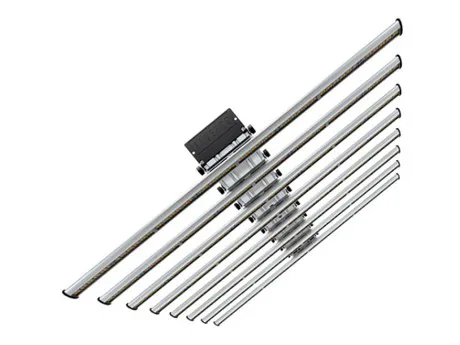The debate has been ongoing for years. It’s quite likely that, if you are making initial design plans for your grow facility, or even if you are currently in operation and you’re looking for alternative lighting, you’ve been faced with a few questions. Are LED lights the right choice for me? Do they perform as well as traditional HID lighting options such as metal halide (MH) or high pressure sodium (HPS)? Is it worth the upfront cost? The team with Eminence Consulting Group wrote a blog about this matter. The company offers consulting services for the growing cannabis industry
"Undoubtedly, the initial sticker shock can have you turning the other way without mindful consideration. But let’s look at all factors before we make such hasty decisions", they start their explanation on various lighting solutions.

LED Lighting
First, let’s just address the most looming concern with LED lighting options. Depending on what specific lights you are comparing, choosing LED lights may mean increasing your initial lighting investment by 200-400%. Now take a breath and look beyond this initial purchase and this is when we begin to see how such an investment may be well worth it.
Over the course of many years, LED technology for horticultural use has come a long way. Certainly, there will continue to be more advancements in LED lighting. Many of the top LED lighting manufacturers have run endless trials of spectral quality and output optimization. In fact, cannabis cultivation alone has been a significant motivating factor for advancing this lighting technology. Lights like MH and HPS were adopted a long time ago for indoor cultivation, and while even this technology has come a long way, it has still been met with limits. Ultimately, they use high powered ballasts and lamps that generate excessive amounts of heat. Efficiency in LEDs means that you can meet the same light output at a lower wattage.
However, it doesn’t end at intensity. While intensity is very important for overall plant growth and development, just as important is the actual light spectrum. You may notice the market has been flooded with cheap LED options, largely in the consumer markets, but the commercial markets have been subjected to this as well. Many of the more reputable LED lighting manufacturers have put a large focus on optimal spectrum. Some even include variable spectrums that can be adjusted throughout the grow cycle. The spectral quality can affect shoot length, bud development, leaf size, cannabinoid, flavonoid and terpene production. Be cautious of any lighting manufacturer that insists on omitting much of the spectrum and overemphasizing purely red and blue diodes, especially if they promote said lights as “full spectrum”.
So, onto more pressing matters. Is this investment worth it? If you break down the numbers we can certainly see how it would be worth it. Consider that lower wattage, means lower energy, thus less thermal output for the same light output. So, while there is operational cost savings due to wattage alone (roughly 40% less energy usage when comparing leading brands in both markets), the true savings comes from decreased BTU output that can be credited to the lower wattage, which means BTU output follows in tandem with the 40% reduction. This means much less load on environmental cooling systems. For anyone familiar with operating costs of an indoor cultivation facility, you will know this can make a dramatic difference in recurring expenses and operating costs. On a final note, quality LED lights, as mentioned before, have a more desirable spectrum over lights such as HPS, which means the energy being used will be more appropriately applied to plant development, rather than spikes in the spectrum that are less desired.
Yet another benefit to utilizing LEDs would be for vertical grow systems. These types of grow models are gaining in popularity. For instance, if you use a two-tiered vertical grow design (whether it be stationary racking or mobile racking systems), this means you are doubling your canopy space while utilizing the same square footage. It doesn’t take much imagination to see how such a model would be extremely valuable. Utilizing HIDs with high thermal output just simply aren’t accommodating for this model and could be extremely problematic.
The yield potential with the latest LED technology has been credited for keeping up pace with HID lighting, possibly giving a slight edge to double-ended HPS. All things considered, this difference is negligible when given the operation cost savings. Choosing the appropriate lights for your operation is certainly something worth investing time into considering. When considering LEDs, don’t just focus solely on the sticker shock of those upfront prices, but look into the future and consider, not just your ROI, but general longterm operating cost reductions.
Read more about the various lighting solutions at eminencecannabis.com .
For more information:
Eminence Cannabis
+1 313-681-5885
www.eminencecannabis.com
